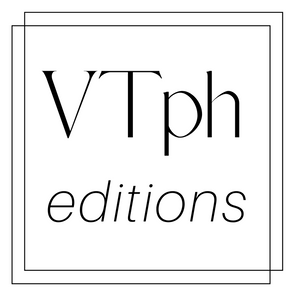SPOTLIGHT // Kunstmuseum Wolfsburg "Utopia. Recht auf Hoffnung"
Idee / Konzeption:
Andreas Beitin
Kuratoren-Team:
Andreas Beitin, Sebastian Mühl, Dino Steinhof
Kuratorische Assistenz:
Veronika Mehlhart
Aktuell erleben wir weltweit eine bisher so nicht gekannte Phase der Polykrise: Neben Kriegen, globalen Fluchtbewegungen und einem sich ausdehnenden Vertrauensverlust in Demokratien dominiert vor allem die menschengemachte Klimakatastrophe das Denken und Handeln vieler. Jenseits von Zynismus und Weltuntergangsstimmung sollte jedoch ein auf Solidarität und Gemeinsamkeit basierendes Zusammenleben als Grundlage für ein zivilisatorisches und ökologisches Überleben möglich sein. Im 21. Jahrhundert sind es vor allem Künstler*innen, die solche Gedanken in ihren Werken aufgreifen und den Diskurs um mögliche Utopien vorantreiben.

Uýra Sodoma, Série Elementar – Lama, 2017, Druck auf Aludibond, 80 × 120 cm, Courtesy Uýra Sodoma, Foto: Keila Sankofa, Instagram: @uyrasodoma
Das vom Kunstmuseum Wolfsburg initiierte Ausstellungs- und Publikationsprojekt Utopia. Recht auf Hoffnung will ein Zeichen der Zuversicht setzen, wie ein besseres und gerechteres Leben für alle auf diesem Planeten gelingen kann. Dabei geht es nicht um den neuen großen Weltentwurf, sondern um eine Vielzahl von Mikro-Utopien, die in ihrer Gesamtheit etwas Positives bewirken können. Im Zentrum von Utopia stehen daher künstlerische Werke und Installationen sowie Beispiele aus dem angewandten Bereich, die utopische Projekte oder Ideen innerhalb verschiedener Medien vorstellen. Neben der kritischen Auseinandersetzung mit der Utopie selbst richtet sich der Fokus von Utopia auf aktivistische und praxisorientierte Handlungsfelder. Die verschiedenen Werke und Objekte bieten Vorschläge zu einem gerechteren und nachhaltigeren Miteinander, das ebenso marginalisierte Gesellschaftsgruppen wie auch die belebte und die unbelebte Natur berücksichtigt.
Künstler*innen und Kollektive
AES+F, Pablo Albarenga, aLifveForms (fed and cared for by JP Raether), Kader Attia, Yael Bartana, Martin Beck, Ursula Biemann, Nuotama Frances Bodomo, melanie bonajo, Eglė Budvytytė, Violeta Burckhardt und Andreas Greiner, Cao Fei, Anetta Mona Chişa und Lucia Tkáčová, Chto Delat International, Jasmina Cibic, Jordi Colomer, Thomas Demand, Margret Eicher, Olafur Eliasson, Philipp Fürhofer, Robert Gabris, Chitra Ganesh, Stephan Huber und Raimund Kummer, institut für zukünfte, IRWIN, Sven Johne, Keiken, Folke Köbberling, Mischa Kuball, Mischa Leinkauf, Haley Mellin, Achim Mohné, Muoto architectes und Georgi Stanishev + Clémence La Sagna, Marina Naprushkina, Otobong Nkanga, OX2architekten, Cornelia Parker, Rosana Paulino, Rory Pilgrim, Oliver Ressler, Lin May Saeed, Jaanus Samma, Khvay Samnang, Tomás Saraceno, Yinka Shonibare CBE RA, Cauleen Smith, Maja Smrekar, Société Réaliste, Uýra Sodoma, Sputniko!, Team Mycel der Ostfalia Hochschule, Terreform ONE, Rhoda Ting und Mikkel Bojesen, Nasan Tur, Hermann Weber, Liam Young.

Muoto architectes & Georgi Stanishev + Clémence La Sagna, Ball Theater – La fête n‘est pas finie, 2023, Stahl, weitere Materialien, Installationsansicht, 18. Architekturbiennale Venedig,
© Muoto architectes & Georgi Stanishev, Foto: Schnepp Renou
Wissenschaftlicher Beirat und Publikation
Ein aus verschiedenen Fachgebieten zusammengesetzter Wissenschaftlicher Beirat unterstützte die Vorbereitungsphase der Ausstellung.
Begleitet wird das Ausstellungsprojekt Utopia. Recht auf Hoffnung von einer transdisziplinär ausgerichteten und reichhaltig bebilderten Publikation (dt./engl., ca. 300 Seiten) mit Texten von Inke Arns, Andreas Beitin, Friedrich von Borries, Dagmar Fink, Lisa Garforth, Jörg Heiser, Jakob Huber, Wolfgang Kaleck, Sebastian Mühl, Ludger Schwarte, Maristella Svampa, Tilo Wesche, Kerstin Wolff und Alex Zamalin.
(Presse: Kunstmuseum Wolfsburg)
Kunstmuseum Wolfsburg
Utopia. Recht auf Hoffnung
Ausstellungsdauer: 27.9.2025 — 11.1. 2026
Hollerplatz 1
38440 Wolfsburg
//
Idea / Concept:
Andreas Beitin
Curatorial Team:
Andreas Beitin, Sebastian Mühl, Dino Steinhof
Curatorial Assistant:
Veronika Mehlhart
We are currently experiencing an unprecedented period of polycrisis on a global scale: In addition to wars, worldwide refugee movements, and a growing loss of faith in democracies, the man-made climate catastrophe dominates the thoughts and actions of many. Beyond cynicism and apocalyptic mood, however, it should be possible to live together in solidarity and community as a basis for civilizational and ecological survival. In the first two decades of the twenty-first century, it is primarily artists who take up such ideas in their works and advance the discourse on possible utopias.

Cauleen Smith, Sojourner (Videostill), 2018, 1-Kanal-Videoinstallation, Farbe, Ton, 22:41 min, Courtesy die Künstlerin und Morán Morán
The exhibition and publication project Utopia. The Right to Hope, initiated by the Kunstmuseum Wolfsburg, aims to give a sign of hope and confidence that a better and fairer life can be achieved for everyone on this planet. The aim is not to create a new grand design for the world, but rather to focus on a variety of micro-utopias that, when combined, can achieve something positive. For this reason, Utopia focuses primarily on works of art, but also on architectural projects, design objects, and examples from the applied arts that present utopian projects or ideas in various media. In addition to the critical examination of the concept of utopia itself and its promising but also totalitarian implications, Utopia focuses on projects that aim at small-scale change, including activist or practice-oriented fields of action. The various works and objects can offer suggestions on different levels for a more just and sustainable coexistence that takes into account marginalized social groups as well as animate and inanimate nature. In this context, art in particular can make groundbreaking contributions to utopian models for the future, as it has critically accompanied social processes with its palette of aesthetic and thematic means since the dawn of the modern era. This permanent critique of the status quo entitles art, more than any other cultural form, to utopia.
Artists and collectives
AES+F, Pablo Albarenga, aLifveForms (fed and cared for by JP Raether), Kader Attia, Yael Bartana, Martin Beck, Ursula Biemann, Nuotama Frances Bodomo, melanie bonajo, Eglė Budvytytė, Violeta Burckhardt und Andreas Greiner, Cao Fei, Anetta Mona Chişa und Lucia Tkáčová, Chto Delat International, Jasmina Cibic, Jordi Colomer, Thomas Demand, Margret Eicher, Olafur Eliasson, Philipp Fürhofer, Robert Gabris, Chitra Ganesh, Stephan Huber und Raimund Kummer, institut für zukünfte, IRWIN, Sven Johne, Keiken, Folke Köbberling, Mischa Kuball, Mischa Leinkauf, Haley Mellin, Achim Mohné, Muoto architectes und Georgi Stanishev + Clémence La Sagna, Marina Naprushkina, Otobong Nkanga, OX2architekten, Cornelia Parker, Rosana Paulino, Rory Pilgrim, Oliver Ressler, Lin May Saeed, Jaanus Samma, Khvay Samnang, Tomás Saraceno, Yinka Shonibare CBE RA, Cauleen Smith, Maja Smrekar, Société Réaliste, Uýra Sodoma, Sputniko!, Team Mycel der Ostfalia Hochschule, Terreform ONE, Rhoda Ting und Mikkel Bojesen, Nasan Tur, Hermann Weber, Liam Young.
Academic advisory board and publication
An academic advisory board with members from various fields supported the preparation phase of the exhibition. The exhibition project Utopia. The Right to Hope will be accompanied by a transdisciplinary publication with texts from the fields of art history, philosophy, ecology, sociology, law, architecture, history, and politics, including contributions by the following authors: Inke Arns, Andreas Beitin, Friedrich von Borries, Dagmar Fink, Lisa Garforth, Jörg Heiser, Jakob Huber, Wolfgang Kaleck, Sebastian Mühl, Ludger Schwarte, Maristella Svampa, Tilo Wesche, Kerstin Wolff and Alex Zamalin.
Cooperation partners at local, national, and international level, as well as an extensive educational and support program, ensure the best possible networking and dissemination of the contents of Utopia. The Right to Hope.
(Press: Kunstmuseum Wolfsburg)
Kunstmuseum Wolfsburg
Utopia. The Right to Hope
September 27, 2025 — January 11, 2026
Hollerplatz 1
38440 Wolfsburg
https://www.kunstmuseum.de/en/
//
Cover: Keiken, Morphogenic Angels, 2023, HD-PC-Spiel mit Xbox-Controller, Dauer ca. 50-70 min, Installationsansicht, Choose your Player, © Zeppelin Museum Friedrichshafen, Foto: Markus Tretter


